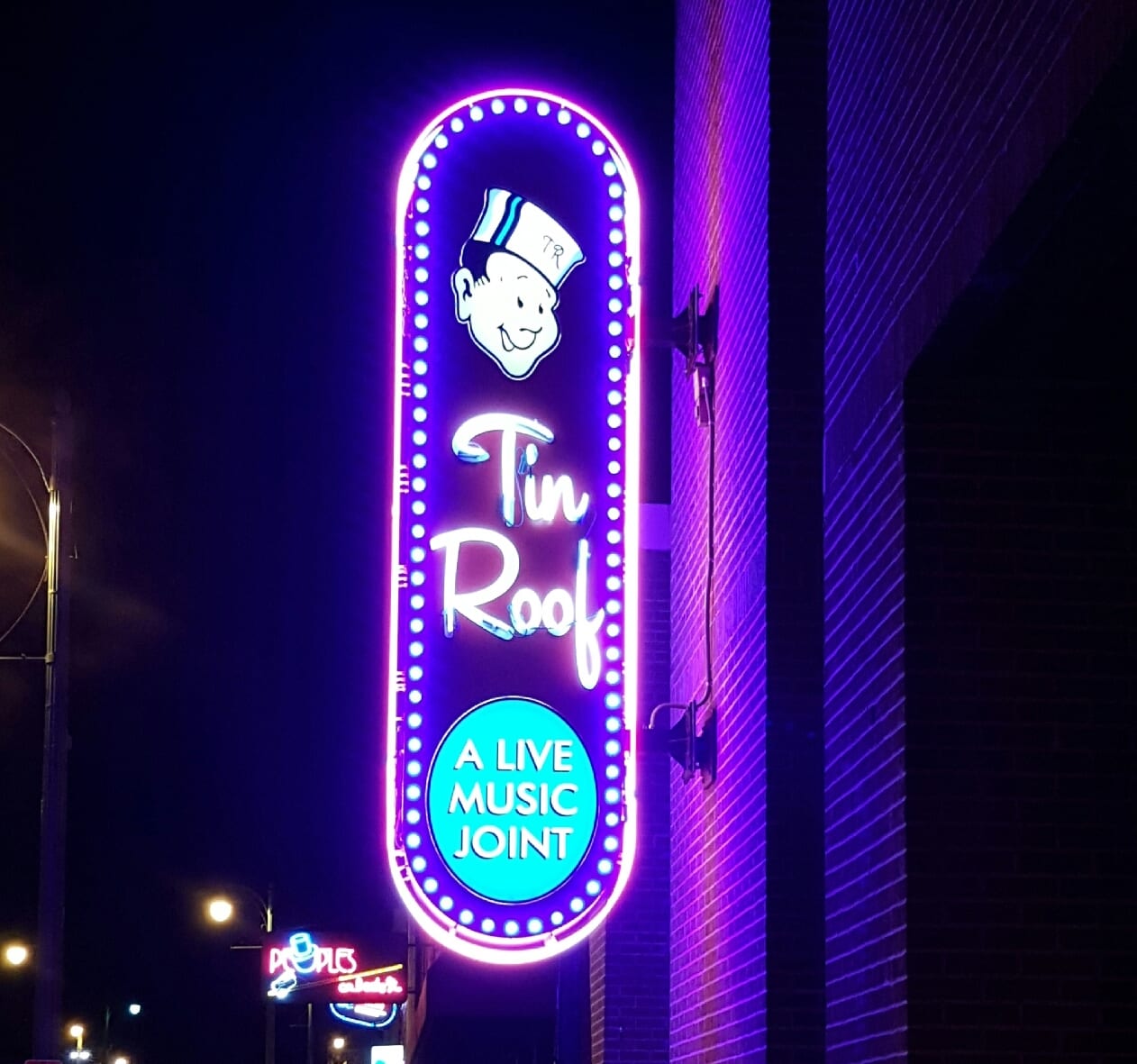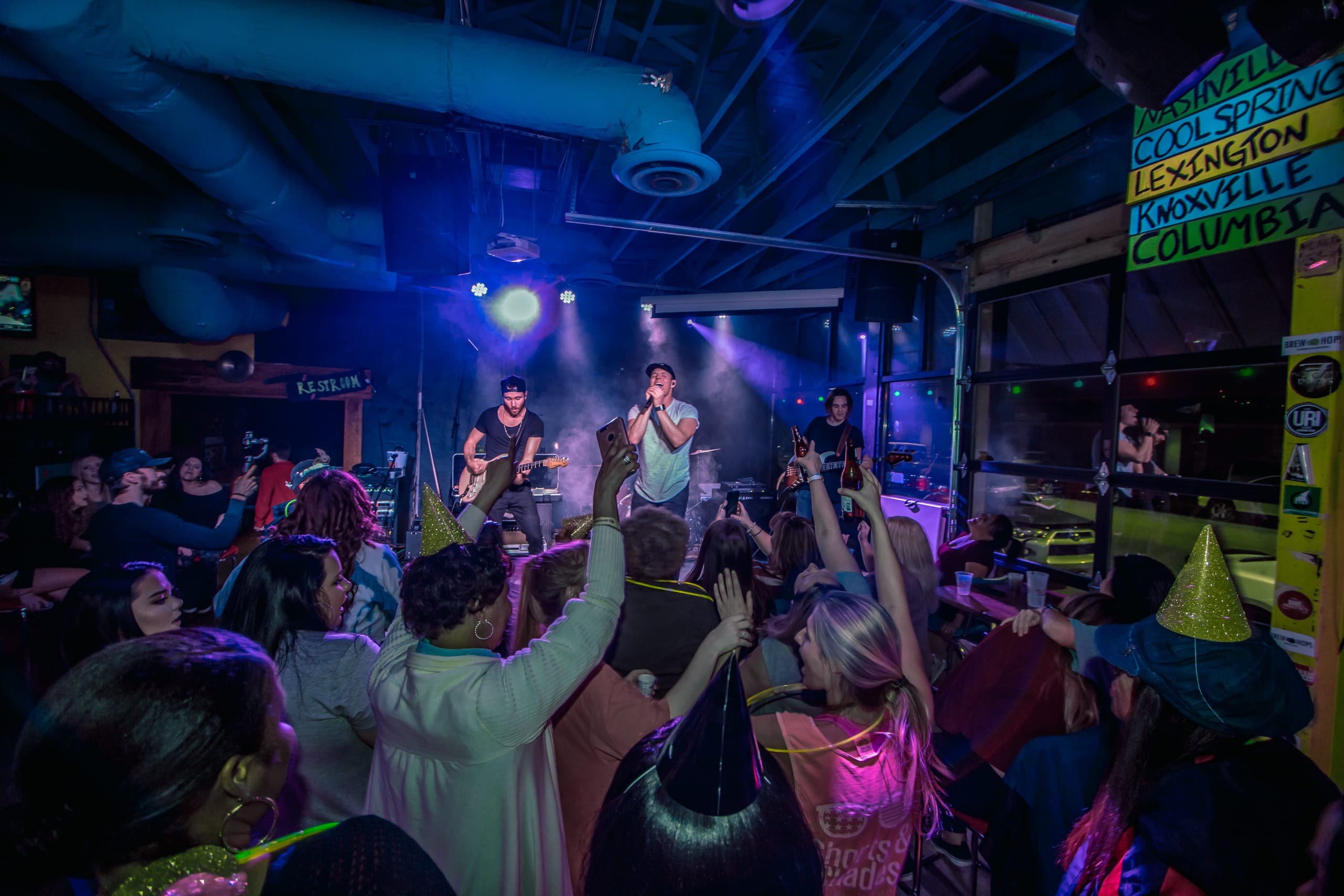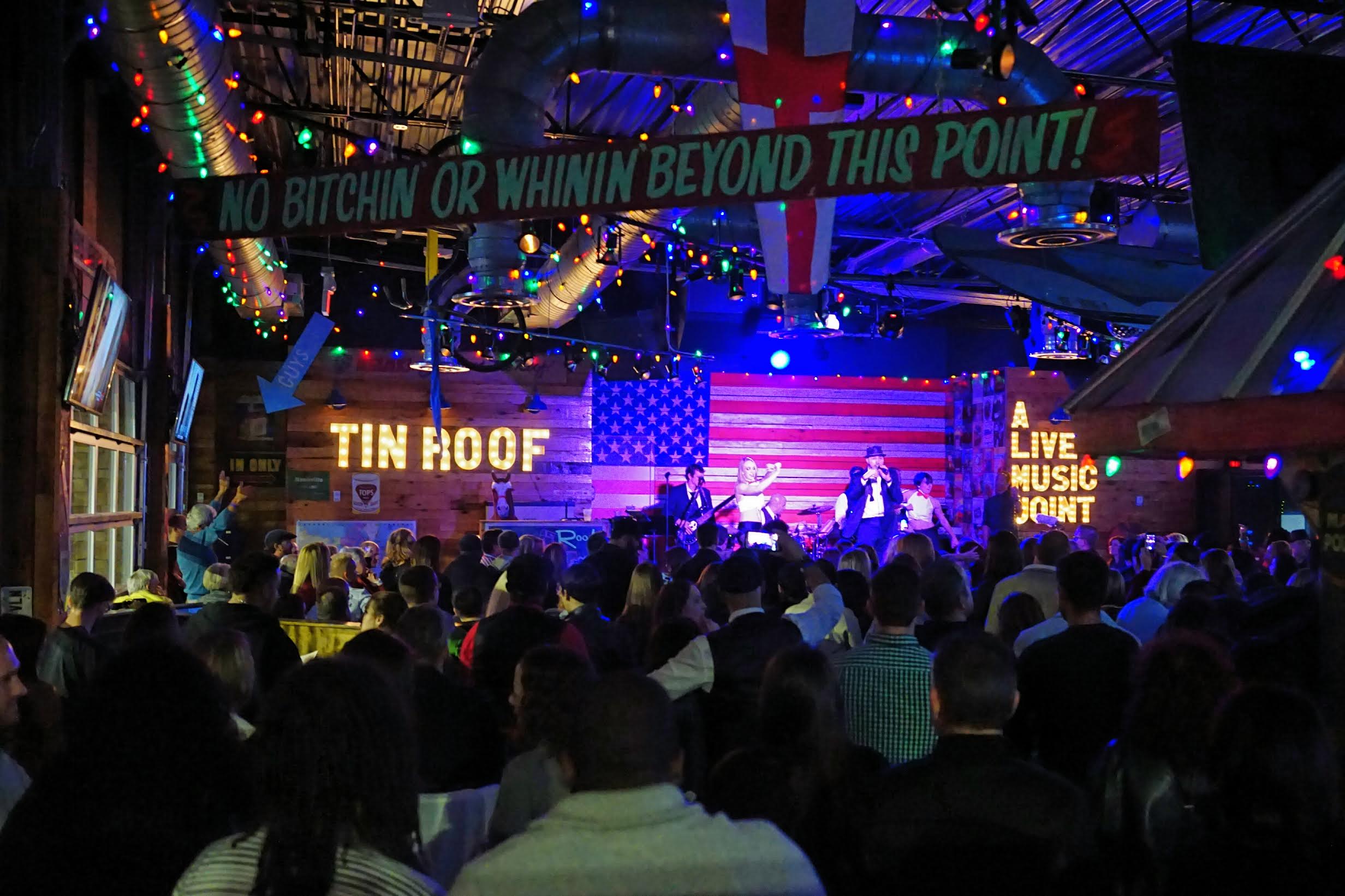Tin Roof has sat on Demonbreun Hill since 2002, housing songwriter rounds and live music for nearly two decades.
The company has grown significantly over the past few years and now has 17 locations across the US, supporting a lot of new talent out of Nashville. In addition to its two Nashville locations, Tin Roof has establishments in in Alabama, South Carolina, Indiana, Florida, North Carolina, Michigan, Kentucky, California, and more. Tin Roof’s inside stage capacities range from 300-1,200 (pre-pandemic), and most of the locations do outdoor concerts ranging from 600-2,500 pre-pandemic capacities.
Artists including Luke Bryan, Florida Georgia Line, Luke Combs, Dustin Lynch, and many more have made fans out of patrons on Tin Roof’s circuit.
The CEO of Tin Roof, Bob Franklin, recently spoke with MusicRow to discuss the growth of the circuit over the last 19 years.
MusicRow: Tell me about starting the Tin Roof brand.
We just celebrated our 19th anniversary last month in February, so we’re on year 20 right now. The original spot is on Demonbreun close to Music Row. It was never created as something we were going to expand on or build a brand around, it was just like our tagline says: a live music joint. That’s what it is: it’s a joint, it’s a restaurant, it’s a bar and it’s all centered around live music. We just had really good feedback. The customers loved it, the musicians loved it, and we have always had a great crew. So we started expanding in 2008 and it’s just opened up a couple of years since then. We’re up to 17 locations in 16 cities.
When did you guys start putting together the Tin Roof tours?
The thing about Tin Roof is we’re not a touring venue, we’re not a concert venue and we’re also not just a restaurant. We do a little bit of everything, but ever since we really opened the second spot, we’ve had friends, musicians and Music Row [industry members] hit us up saying, ‘Hey man, what about this show here and there?’ So it’s organically grown as we’ve opened more spots. We’ve now got a nice routing system [across the United States.] Although it’s not our core focus of the concept since we’re a full service bar and restaurant, we have live music every single night regardless if we have a tour coming through or not, we’re open.
More stages equal more opportunities for the music community—and that’s not just tours. It’s also about the locals, the local sound engineers get to work and get a full-time job so they’re available when the tourists and the festivals come through, the local musicians get stages to play on a lot. They get better, they build their own music community. Then we’ve got the folks from Nashville and other cities that connect the dots so they can go tour and build a fan base.
How has the pandemic affected Tin Roof’s growth?
It all comes down to everything we did for those 18 years before the pandemic is what allowed us to survive the pandemic. And by that I mean, hiring really good people, having good people that work for us, a good organizational culture, good relationships with musicians, good relationships with our landlords and everyone else; that has allowed us to stretch into those relationships and pull together. But it’s been our managers and our bartenders, servers, sound engineers, cooks and chefs. That’s it. If we didn’t have the team that we have, I don’t know how we would’ve made it through.
When it came time to bring live music back, we have great relationships with musicians who wanted to come out and play and understood that things would be a little bit different than it was before, so they worked with us on a few things.
At what point in an artists career can they really benefit the most from the Tin Roof circuit and community?
You think of Florida Georgia Line, they played eight or nine Tin Roof locations before they were hitting the radio. Buzz was really building for them when they were hitting the different Tin Roof cities, but all of a sudden we’re going, ‘Oh my gosh, these guys sold out every single one of our rooms on this tour.’ It helped get their name out, it helped them play. They were going to break it big no matter what, they were building a fan base when they came into the room, but I do think getting a little geographic exposure helps.
Luke Combs did a similar run through. By about that second show—and this is all credit to him and his team—he had built such a demand that he was selling out these shows before he hit radio. Having places and stages to play and connect those dots helps build upon some of the work that acts like that have already done, combined with great music of course. Luke Combs was going to be a superstar and Florida Georgia Line were going to be superstars with or without the Tin Roof, they earned it, but I think having places to get out there and play and connect the dots to get on the road does help. Artists that are on the cusp like that, it can help them by getting out there at the right times in a lot of cities.
And then the artists that are maybe a few stages behind that and might be breaking big in a little bit, it helps give them road time, practice time, stage time. It helps them organically connect with people on the ground. We bring in a lot of people and really, since we’re not a touring venue, what we do bring in is new eyeballs. If they’re going out and selling tickets just to their own shows, they’re strengthening their crowd and building upon it, but if they come into our room, all of a sudden they played to 100-200 people that maybe were there just to have a drink and a meal and they go, ‘Man, who is that?’ We see that a lot as well.
How can the Tin Roof help artists connect the dots?
Artists that put together a tour, but really need to connect the cities together [benefit from Tin Roof]. If they’re missing a few places that would help them stay out longer, it can help them be more efficient with their touring. They look at us and go, ‘Hey, I need a couple of these dates here.’ We’re a friendly stage, a friendly concept, a place to get you from A to C when you need B in the middle.
You spoke a little about FGL and Luke Combs, but of all the Tin Roof alumni, what are some of your favorite Tin Roof success stories?
At one point pre-pandemic, I looked at the top 40 on the Billboard charts for country music, 35 had played at Tin Roof at that point. It makes you proud to feel part of a community and help artists. I’m not one to take any credit for anyone else’s success—that’s not our role. These artists are talented and they’re going to break it big, but they do need stages. I’m proud of the consistency and the credibility over the years of having hosted some of these acts that are now playing stadiums and arenas. We’re just a small part of it, but it makes you feel good. We do live music every single night in 17 places. We probably end up producing over 10,000 music performances and sets a year.
Guys like Luke Bryan, I can remember when he did the Capitol Street Pub Crawl Insider Event. He played to a small crowd for a free show and he was an unsigned artist. Then all of a sudden, a year later we book him in our back parking lot and he’s playing to 1,500 people and that seemed like a pretty big deal. Then he played our Columbia, South Carolina parking lot and played the 5,000, which seemed like a big deal. And now of course, he’s playing to arenas and stadiums.
It’s also the people behind the scenes, the tour managers that get to share in that and to everyone else. [Rob Snyder], the guy who does our Revival 615 songwriter night on Tuesday nights had cut with Luke Combs that went to No. 1. That was a big deal for him. That’s the Nashville story: a guy grinding it and out networking, putting people together for writer’s nights and all of a sudden he gets his own cut and it goes No. 1.
What do you want the music industry to know about Tin Roof and its opportunities?
One thing about Tin Roof’s concept is that we approach the music industry with a little bit of humility. We appreciate the artists and the musicians coming through and being able to add to what we can. We’ve always been a pretty easy crew to work with.
We’re not a touring venue, so it’s not as easy as a plug-and-play route on these shows, so there’s a little bit of flexibility, but the network is out there and the ability to reach people. And we want to see people succeed. One of the things I’ll tell artists when they come through and play us for the first few times is I hope you outgrow us. My biggest hope for any artists is that someday they’ll go, ‘Remember when I used to have to play that small little joint right there. I can no longer play it. I’ve outgrown it.’ We can obviously never have Florida Georgia Line again, or Luke Combs, Luke Bryan, or Dierks Bentley because they’ve gotten so big, but it’s nice to know that they played our rooms.
The post Tin Roof’s Bob Franklin Talks The Spirit Of The ‘Live Music Joint’ [Interview] appeared first on MusicRow.com.


